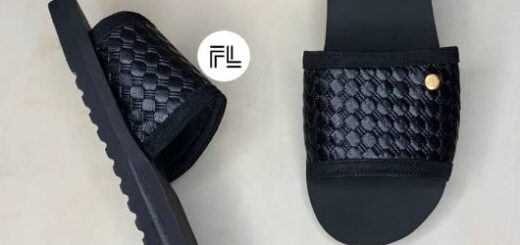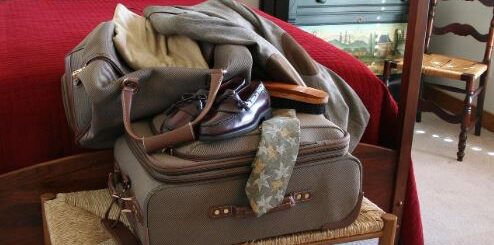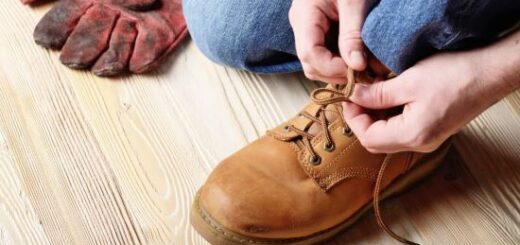Protective Measures in Shoe Craftsmanship: A Closer Look at Plastic Wrapping
In the realm of shoemaking, whether in large industrial settings or in the studio of a traditional shoemaker, protecting the shoe’s upper during production is essential. Various techniques are applied to ensure that the delicate leather remains pristine as the shoes move through each stage of construction. Among these methods, the use of plastic film or wrap stands out as a widely used solution to shield the uppers from accidental scuffs, glue smudges, and other blemishes.
While effective, this approach has its own set of consequences—namely, the inevitable remnants of plastic left behind once the final touches are made. This article explores the purpose of plastic coverings in shoemaking, the process involved, and how to deal with leftover material post-production.
Why Shoe Uppers Require Protection During Production
Leather, particularly fine-grain and high-quality types, is highly susceptible to damage during manufacturing. Sharp tools, aggressive machinery, and even simple human handling can introduce scratches or stains that compromise the appearance and integrity of the final product.
To mitigate these risks, shoemakers often apply temporary barriers over the leather uppers. The extent of this protective coverage varies significantly depending on the type of shoe being made, the materials used, and the individual practices of the shoemaker or factory. Some prefer full enclosures, wrapping the entire upper in plastic film, while others may use smaller pieces of tape at critical contact points.
This step is typically performed after the leather upper has been shaped around the last, ensuring that the plastic doesn’t interfere with the shaping process but offers protection during tasks like welting and finishing.
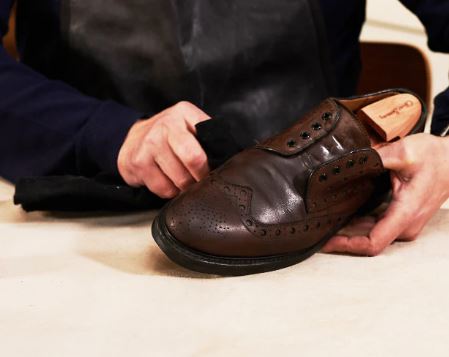
The Heat Shrinking Process and Plastic Coverage Types
There are different types of plastic covers used during shoemaking. One of the most common is the heat-shrink plastic wrap. Initially, this plastic appears oversized and loose-fitting. However, once exposed to heat—either through a specially designed “oven” or a heat gun—it tightens and molds itself snugly around the contours of the shoe upper. This creates a firm protective shell that clings tightly without slipping during subsequent handling.
Other methods involve pre-molded covers or stretch film pulled tautly over the upper, sometimes reinforced with strong adhesive tape in high-impact areas. These reinforcements ensure that even if a tool slips or excess ink spills, the actual leather remains untouched beneath the plastic layer.
When the Cover Comes Off: Plastic Removal After Assembly
Once the shoemaking process reaches its final phases—after welting, edge trimming, and often right before finishing polish—the plastic wrap is removed. Typically, a special knife with a heated blade is used to slice through the plastic as close to the edge as possible. The heat helps the plastic to contract slightly, making the remaining edges curl away and nestle subtly into the seam between the upper and the sole.
Despite the precision of this removal process, small portions of plastic nearly always remain. These bits are usually hidden from view, tucked into the narrow gaps where the upper meets the welt or heel. The placement is deliberate; they’re meant to be non-intrusive and, in most cases, completely invisible.
Are Plastic Fragments Inside Your Shoes a Problem?
For the majority of wearers, these fragments go unnoticed. They pose no risk to the structure or comfort of the shoe and are considered an acceptable byproduct of the protective process. Many high-end, welted shoes—both factory-made and bespoke—contain traces of this material.
Occasionally, however, time and wear can cause these small plastic pieces to become dislodged or migrate slightly. This can result in visible protrusions at the seam or in areas like the inner arch. For some, this may simply be an aesthetic concern. For others, particularly shoe enthusiasts who value craftsmanship and detail, it can be a source of frustration.
Misconceptions About Craftsmanship and Plastic Residue
It’s easy to assume that leftover plastic sticking out from a shoe’s edge reflects careless work or subpar quality. However, this isn’t usually the case. The reality is that even the most meticulous craftsman cannot completely eliminate the possibility of such residues due to how the wrap adheres during heat-shrinking.
The presence of plastic bits is not a sign of negligence but rather a natural side effect of a method that, ironically, is meant to maintain the shoe’s visual and structural perfection during assembly. It’s a trade-off: better to have minor hidden residue than a scuffed or stained upper.
How to Remove Plastic Strips When They Appear
If you notice a piece of plastic emerging from your shoe, there’s no need to panic. The removal process is straightforward and doesn’t require specialized tools beyond what you might already have at home.
Start with a fine pair of tweezers. Locate the edge of the plastic, grip it gently, and begin to pull. Go slowly and steadily to avoid breaking the strip. If it snaps, you’ll need to re-grip the new end and continue. Once a sufficient portion has emerged, you can switch from tweezers to fingers for better traction.
Continue pulling with care to extract the full length of the strip. It’s often longer than expected, running along the internal edge from heel to toe or arch to toe. Avoid using excessive force; doing so can potentially damage the stitching or misalign the welt.
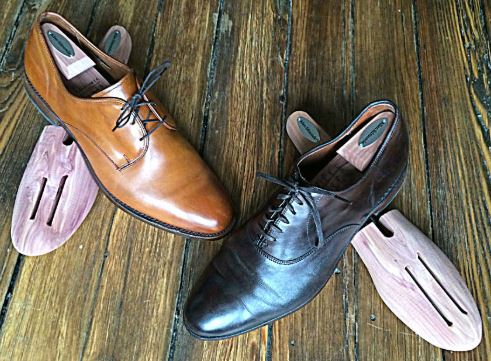
Restoring the Appearance After Plastic Removal
Once the plastic has been removed, you may notice a slight dullness or gap where the plastic previously sat. This is easily remedied. Take a small applicator brush and apply a modest amount of matching shoe cream into the exposed area. Massage it gently along the seam to restore the color and sheen.
Though the improvement might not be dramatically visible from a distance, the act of sealing the gap and nourishing the leather ensures better longevity and keeps your shoes looking well-maintained.
Unexpected Finds: Hidden Residue in Bespoke and Factory Shoes Alike
It’s not just mass-produced shoes that carry these remnants. Bespoke shoes, even those crafted with the utmost care and attention, can harbor hidden strips of plastic. In many cases, they are so discreetly embedded that only a sharp eye or a curious hand will detect them.
Often, once you remove one piece, others may begin to surface, almost like a thread being pulled from a tightly sewn seam. This is especially true in shoes that have undergone significant wear or those stored in warm, humid environments where the adhesive properties of the plastic might loosen.
Final Thoughts: The Hidden Story Behind Shoe Perfection
The use of plastic wrap in shoemaking tells an interesting story about the balance between tradition and modern efficiency. It illustrates the hidden steps craftsmen take to preserve the beauty of their creations, even if those efforts sometimes leave behind subtle clues of their presence.
Rather than a flaw, the presence of a plastic strip is a quiet testament to the complexity of quality footwear production. It is a reminder that behind each polished pair of shoes is a meticulous process—layered, protective, and, at times, invisible.
Whether you’re a casual wearer or a dedicated shoe collector, knowing how and why plastic is used, as well as how to deal with its lingering traces, gives you a deeper appreciation for the artistry under your feet.
Read Also: Removing Candle Wax from Leather Shoes: A Practical Guide
FAQs
Why is plastic used during shoe manufacturing?
Plastic wrap is applied to protect the shoe upper from stains, scratches, and other damage during production processes like welting and finishing.
At what stage is the plastic cover applied?
It’s typically added after the upper is lasted but before the welting, ensuring protection without interfering with shaping.
How does the plastic adhere so tightly to the shoe?
Heat is used to shrink the plastic wrap, causing it to mold snugly around the leather and stay in place throughout the process.
Is the plastic fully removed after shoemaking?
Not entirely. Most is cut away with a heated knife, but small fragments often remain hidden between the upper and sole.
Can leftover plastic damage the shoe?
No, it doesn’t harm the structure or comfort. It’s usually unnoticeable and does not affect the shoe’s durability or performance.
Why does plastic sometimes become visible later?
Over time, movement or environmental changes can cause hidden fragments to shift and protrude slightly from seams.
Is visible plastic a sign of poor craftsmanship?
Not at all. Even high-end or bespoke shoes may show plastic residues—it’s a result of standard protective practices.
How can I remove visible plastic from my shoes?
Use tweezers to gently pull it out. Go slowly to avoid breaking it, then apply shoe cream to restore the area.
Should I be concerned about plastic in my shoes?
No concern is needed. It’s a common and harmless part of the protective process in quality shoemaking.
Do all shoemakers use plastic protection?
Not all, but it’s widely used in both factory and bespoke production where leather quality and appearance are top priorities.

